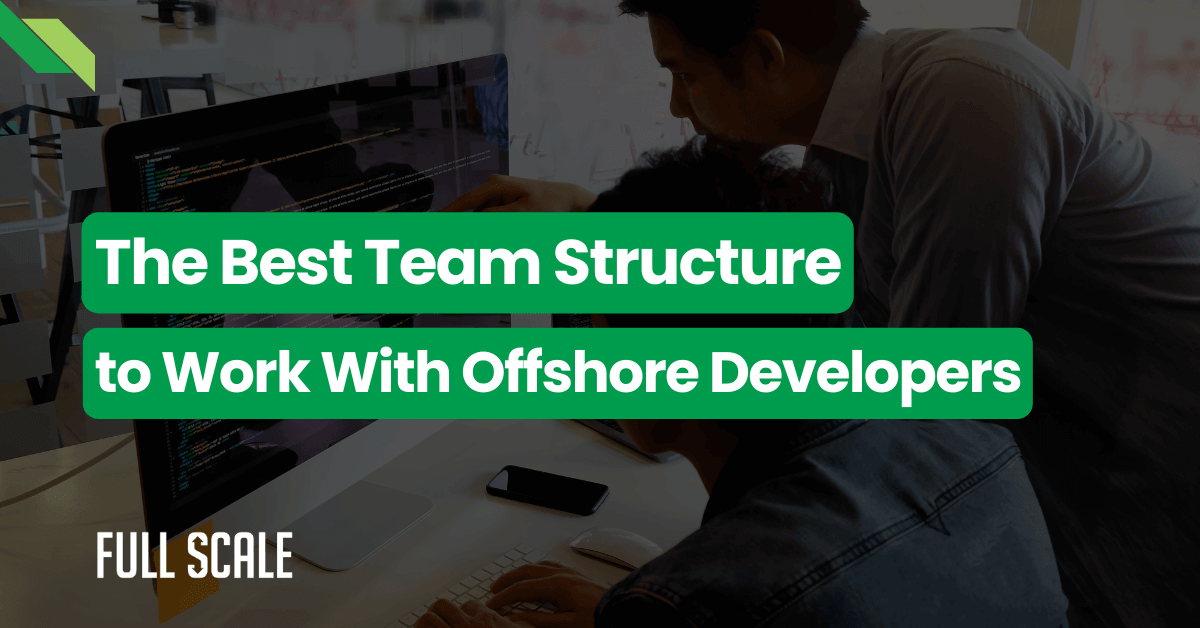Last Updated on 2025-07-28
Six months. That’s how long it took me to go from celebrating our 50th engineer hire to wondering if I’d completely lost control of my engineering organization.
The irony? We had followed all the “best practices” for handling engineering team scaling challenges. We hired A-players. We implemented Agile. We had standups, retrospectives, and enough Jira tickets to wallpaper a stadium.
Yet our velocity had tanked. Features that used to take 2 weeks now take 2 months. Our deployment frequency dropped from daily to weekly (on a good week). And my calendar looked like a game of Tetris where someone removed the ability to clear lines.
I’m not alone in this struggle. According to Stripe’s 2024 Developer Report, 96% of engineering leaders say their teams spend more time on coordination and meetings than actual coding once they pass 50 developers.
The average? A staggering 42% of engineering time is lost to “organizational overhead.”
Here’s what nobody tells you about engineering team scaling challenges: Everything that got you to 50 engineers will actively prevent you from getting to 100.
The 50-Engineer Inflection Point Nobody Warns You About
At 15 engineers, you’re a tight unit. Communication happens naturally. Everyone knows what everyone else is working on. You ship fast because coordination is automatic.
At 30 engineers, you start feeling the strain. You add a few processes, maybe split into 3-4 teams. It’s manageable. Traditional advice still works.
But at 50+ engineers? You hit what I call the “Organizational Complexity Wall” – the most underestimated of all engineering team scaling challenges.
Communication Complexity Growth

Suddenly:
- Every feature touches 3-4 teams’ codebases
- Architecture decisions require 5 meetings and a committee
- Your principal engineers spend 80% of their time in coordination meetings
- New hires take 3 months to ship their first meaningful code
- Technical debt compounds faster than you can pay it down
The worst part? Your instinct is to add more process, more meetings, more documentation. Which makes everything worse.
Why Traditional Scaling Advice Makes Engineering Team Scaling Challenges Worse
Let me save you from the mistakes I made. Here’s the conventional wisdom that nearly killed our productivity:
“Just Hire More Engineers”
This is Brooks’s Law in action – adding people to a late project makes it later. But nobody mentions that Brooks’s Law gets exponentially worse past 50 engineers.
Why? Because every new engineer adds n-1 new communication paths. At 50 engineers, you have 1,225 potential communication paths. At 100? That’s 4,950 paths. These exponential engineering team scaling challenges are what catch most CTOs off guard.
Your coordination overhead doesn’t grow linearly – it grows geometrically.
“Implement Better Processes”
We tried everything:
- Scaled Agile Framework (SAFe) – turned us into a paperwork factory
- Spotify Model – worked great until we realized we’re not Spotify
- More detailed specs – just moved the bottleneck from engineering to product
Here’s the truth: Process is organizational scar tissue. It forms whenever communication fails. And past 50 engineers, communication fails constantly – creating new engineering team scaling challenges with every added layer of process.
“Create Clear Ownership Boundaries”
Sounds logical. Give each team clear ownership of specific services or features.
The reality? Your product is interconnected. That “simple” feature requires:
- Team A to modify the API
- Team B to update the data model
- Team C to adjust the frontend
- Team D to handle the mobile apps
Now you need a project manager just to coordinate a button change.
“Invest in Better Tools”
We bought them all. Jira for tracking. Confluence for documentation. Slack for communication. GitHub for code. DataDog for monitoring.
Result? Engineers spend 30% of their time context-switching between tools. Information is scattered across 15 different systems. And everyone is asking, “Where did Sarah document that decision?”
The Real Problem: You’re Fighting Physics
Here’s what actually happens at 50+ engineers that nobody talks about:
Cognitive Load Reaches Critical Mass
The human brain can only maintain meaningful relationships with about 150 people (Dunbar’s Number). But effective collaboration requires deeper connection – probably closer to 50.
Past that point, your engineers stop seeing colleagues as people and start seeing them as interfaces. Communication becomes transactional. Trust erodes. Politics emerge. These human-centered engineering team scaling challenges are often harder to solve than technical ones.
The Hidden Cost of Coordination
We tracked it. Our senior engineers were spending:
Senior Engineer Time Allocation
Where Your Senior Engineers’ Time Really Goes
That’s your most expensive talent spending 80% of their time on coordination overhead.
Architecture Becomes Your Destiny
At 50+ engineers, your architecture determines your organizational structure (Conway’s Law). If you have a monolithic codebase, you’ll have monolithic teams with massive dependencies.
Most CTOs try to fix team problems with process changes. But you can’t process your way out of architectural debt, one of the most persistent engineering team scaling challenges you’ll face.
Decision Velocity Approaches Zero
With 50+ engineers, every decision affects multiple teams. So decisions require:
- Discovery meetings to understand impact
- Design reviews to propose solutions
- Architecture reviews to ensure compliance
- Multiple team syncs to coordinate implementation
- Retrospectives to discuss what went wrong
By the time you make a decision, the market has moved on.
Top 3 Frameworks That Work for Engineering Team Scaling Challenges
After nearly burning out my entire engineering leadership team, we discovered what actually works at this scale. It’s not more process—it’s fundamental restructuring around three principles:
1. Team Topology Over Process
Stop organizing by technology layers (frontend, backend, data) and start organizing by business capabilities. Each team should be able to ship value independently.
We restructured into:
- Stream-aligned teams: 5-8 engineers owning a complete user journey
- Platform teams: Building internal tools/services that other teams consume
- Enabling teams: Specialists who help other teams level up (security, performance, etc.)
- Complicated subsystem teams: Owning the gnarly technical areas that require deep expertise
Result: 70% reduction in cross-team dependencies, directly addressing the root cause of most engineering team scaling challenges.
2. Architectural Boundaries Over Organizational Boundaries
You can’t fix organizational problems without fixing architectural problems. We implemented:
- Service boundaries that match team boundaries – each team owns its entire stack
- API contracts between teams – not meetings
- Event-driven architecture – teams publish events, not chase approvals
- Feature flags – ship without coordinating releases
This dropped our average feature delivery time from 8 weeks to 2 weeks.
3. Cognitive Load Management Over Individual Productivity
Stop measuring individual velocity. Start measuring cognitive load. We implemented:
- Team cognitive load budgets – no team takes on more than they can handle
- Interaction mode protocols – defined how teams work together (collaboration, X-as-a-Service, or facilitating)
- Documentation as code – decisions live next to the code, not in Confluence
- Automation over process – if you’re doing it twice, automate it
These approaches specifically target the human side of engineering team scaling challenges that most frameworks ignore.
The 5 Metrics That Actually Matter
Throw away your velocity charts. Here’s what we measure now:
| Metric | What It Tells You | Target | Red Flag |
| Deployment Frequency | How often does each team ships to production | Daily | < Weekly |
| Lead Time | Idea to production (not story points) | < 1 week | > 2 weeks |
| Mean Time to Recovery | How fast do you fix problems | < 1 hour | > 4 hours |
| Cross-team Dependencies | Architectural coupling | < 20% | > 40% |
| Meeting Load | Hours per engineer per week | < 6 hours | > 12 hours |
Our Transformation Path (Based on Experience)
Here’s the honest timeline for fixing a 50+ engineer organization and overcoming these engineering team scaling challenges:
Months 1-2: Audit your architecture and team dependencies. You’ll be horrified.
Months 3-4: Start splitting the monolith (code and teams). Expect resistance.
Months 5-6: Implement new team topologies. Productivity will temporarily drop.
Months 7-9: New patterns are established. Velocity starts recovering.
Months 10-12: You’ll exceed your previous velocity with half the coordination overhead.
What Do Engineering Teams at 50+ Really Need?
After watching dozens of CTOs struggle with the same problems, I’ve identified the fundamental shift in thinking required at this scale.
The traditional approach of adding more processes, hiring more managers, and buying better tools is exactly backwards. What actually works is counterintuitive; you need less complexity, not more.
Traditional vs. Effective Scaling Approaches

The Full Scale Advantage
This transformation is brutal. I know because I’ve done it twice—once at my previous company and once at Full Scale.
The difference? At Full Scale, we learned to build teams that scale from day one. Our teams:
- Start with clear architectural boundaries
- Have embedded technical leadership
- Follow proven interaction patterns
- Include cognitive load management from the start
When you hire through Full Scale, you’re not just getting developers. You’re getting a team structure designed to avoid the common engineering team scaling challenges that derail growth.
The Hard Truth About Scale
Most CTOs won’t make these changes. They’ll keep adding process, keep hiring more engineers, keep wondering why things get slower.
They’ll blame the engineers. They’ll blame the product team. They’ll blame the methodology.
But the problem isn’t the people or the process. It’s the physics of organizational scale. Understanding these fundamental engineering team scaling challenges is the first step to solving them.
You can’t manage your way out of this. You have to architect your way out.
Ready to Scale Without the Pain?
If you’re approaching 50 engineers (or already past it), you have three options:
- Keep doing what you’re doing, and watch velocity continue to decline
- Try to implement these changes yourself (budget 12 months and expect pain)
- Augment with teams that already understand scale
If you’re ready to stop fighting physics and start shipping code again, let’s talk. At Full Scale, we’ve helped dozens of CTOs navigate the 50-engineer inflection point without losing their minds (or their best engineers).
Book a call, and I’ll share the exact playbook we used to increase our deployment frequency from 50 to 200 engineers.
Because solving engineering team scaling challenges isn’t about having more engineers. It’s about having the right structure for the physics of your scale.
Scale Smarter, Ship Faster. Do It Now.
FAQs: Engineering Team Scaling Challenges
What exactly happens at the 50-engineer threshold?
At 50+ engineers, communication paths grow from 1,225 to 4,950 potential connections. This creates exponential coordination overhead that traditional management structures can’t handle. Your organization hits a complexity wall where adding more people actually slows things down.
How do I know if my team has hit the scaling wall?
Key indicators include: features taking 2-4x longer to ship, senior engineers spending 80% of time in meetings, simple changes requiring 3+ teams to coordinate, and new hires taking months to become productive. If your velocity is declining despite hiring more people, you’ve hit the wall.
Can’t we just implement SAFe or another scaling framework?
Frameworks like SAFe often add more process overhead without addressing the root cause – architectural and organizational coupling. We tried it. It turned us into a paperwork factory. The solution isn’t more process; it’s better structure.
How long does restructuring really take?
Realistically, 10-12 months for a full transformation. Months 1-2 for assessment, 3-6 for initial restructuring, 7-9 for new patterns to establish, and 10-12 to exceed previous velocity. Yes, it’s painful. But the alternative is a permanent decline in velocity.
What if we’re already past 100 engineers?
The same principles apply, but the transformation is harder. You’ll need to create multiple autonomous business units, each operating like a 50-person startup. Think of it as federation rather than centralization. The key is reducing dependencies between units.
Why do so many companies fail to address their engineering team scaling challenges?
Most companies treat symptoms instead of root causes. They add more process when they should restructure teams. They hire more people when they should reduce dependencies. They blame individuals when they should fix systems. Real solutions require fundamental changes that many leadership teams aren’t willing to make.
What are the most common engineering team scaling challenges CTOs overlook?
The biggest overlooked challenges are cognitive load limits, architectural coupling, and the exponential growth of communication paths. Most CTOs focus on hiring and process improvements without realizing these fundamental physics problems. They try to scale linearly in a world that scales exponentially.

Matt Watson is a serial tech entrepreneur who has started four companies and had a nine-figure exit. He was the founder and CTO of VinSolutions, the #1 CRM software used in today’s automotive industry. He has over twenty years of experience working as a tech CTO and building cutting-edge SaaS solutions.
As the CEO of Full Scale, he has helped over 100 tech companies build their software services and development teams. Full Scale specializes in helping tech companies grow by augmenting their in-house teams with software development talent from the Philippines.
Matt hosts Startup Hustle, a top podcast about entrepreneurship with over 6 million downloads. He has a wealth of knowledge about startups and business from his personal experience and from interviewing hundreds of other entrepreneurs.




